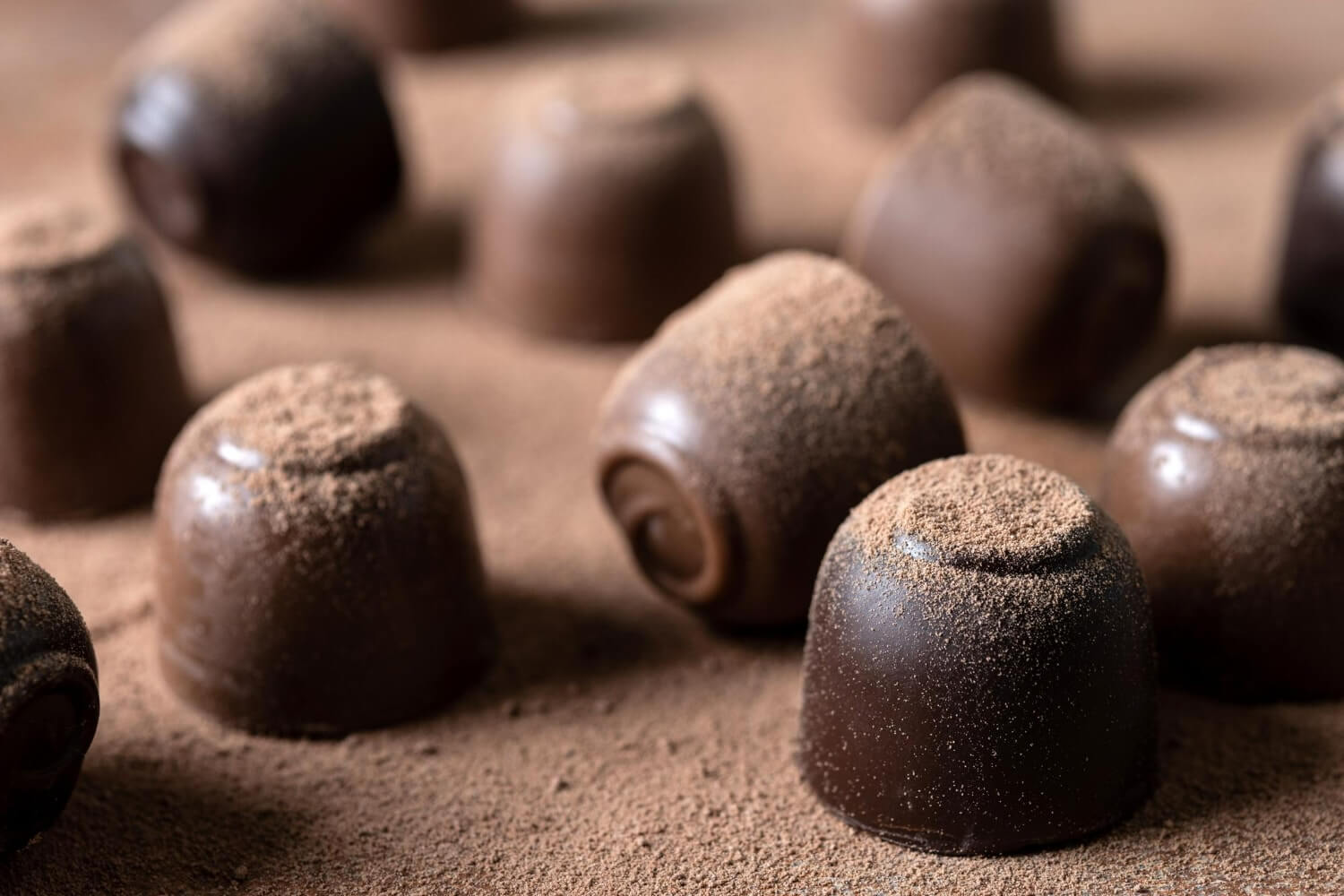Artisanal chocolate is the pinnacle of craft in the chocolate industry. Unlike mass-produced variants that emphasize volume and uniformity, artisan creations highlight the rich flavor and unique qualities of cacao beans cultivated in Central America, West Africa, and Southeast Asia. Each bar tells a story, from the finest produce grown by local farmers to the tempered chocolate molded by skilled chocolatiers.
For lovers and enthusiasts, exploring gourmet choices is more than indulgence: it is about savoring health benefits, distinctive floral aromas, and exquisite flavors that only high-quality chocolate can deliver.
This guide to artisanal chocolates explores their production, styles, and how to enjoy them to delight your taste buds.
What Artisanal Really Means
In chocolate, artisanal goes beyond the label. It means chocolate making in small batches, often bean to bar, where craftsmen oversee the entire production process.
Working with premium cocoa beans sourced through fair trade practices, they ensure fair compensation for farmers and support communities through sustainable farming methods.
Unlike commercial chocolates that include with condensed milk, milk powder, and sugar, artisanal chocolate favors natural ingredients, lesser sugar, and sometimes plant-based alternatives such as coconut sugar.
The result is refined chocolates with distinct, complex flavors and balanced sweetness: healthier options that showcase integrity and craftsmanship.
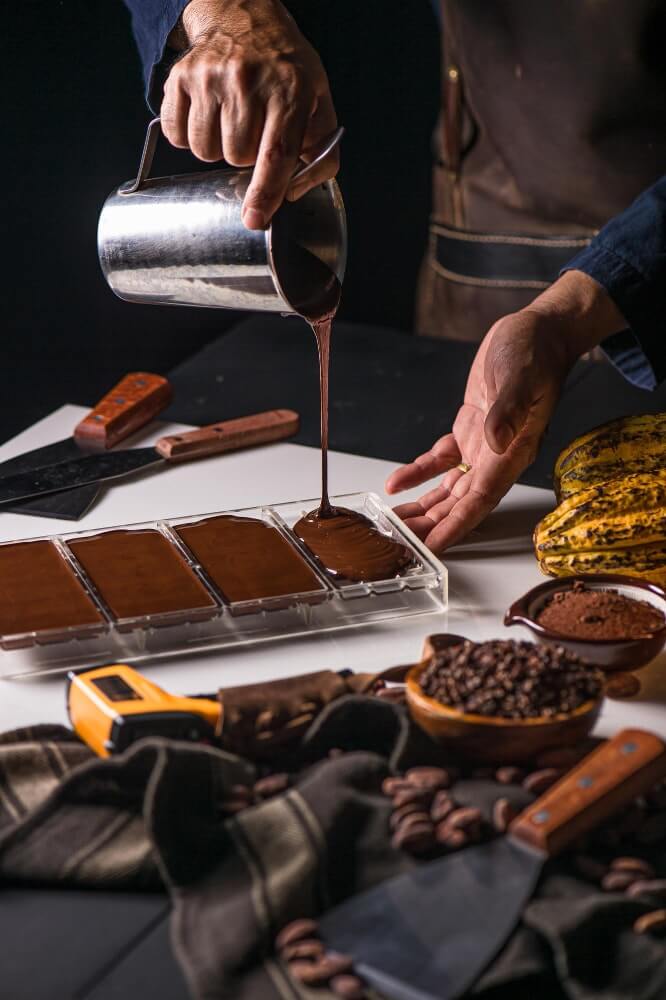
From Pod to Bar: Why Process Matters
The journey begins with cacao beans harvested from pods. Fermentation and drying unlock the precursors of cocoa liquor, solids, and butter: the foundations of chocolate.
Once shipped to chocolatiers, the beans are roasted, with lighter roasts preserving fruity or floral notes and darker roasts creating deep, chocolatey richness.
During chocolate making, beans are winnowed, ground, and continuously mixed with sugar, milk solids, or milk powder, depending on the goal: dark chocolate, milk chocolate, or white chocolate.
Conching smooths the chocolate mixture, while tempering aligns cocoa butter, giving the bar a glossy finish and creamy texture. Unlike mass-produced chocolates, artisan chocolates are crafted with precision at every step to preserve their unique flavors.
Reading the Label Like a Pro
A chocolate bar’s label reveals its story. Cocoa content, such as 70 percent or 85 percent, indicates the proportion of cocoa solids and cocoa butter, not just sweetness. Two dark chocolate bars at 70 percent may taste entirely different depending on the cacao varieties or roast profile.
Labels often specify if a bar is single-origin, such as from the Ivory Coast or Peru, or a blend for balanced sweetness. Ingredients should be minimal: cacao beans, sometimes cocoa butter, sugar, and for milk chocolate, milk solids or condensed milk.
Specialty chocolates and gourmet chocolates may also highlight fair trade certifications, harvest years, or artisan details.
Elegantly packaged fine chocolates often reflect transparency in production, distinguishing them from mass-produced chocolates on store shelves.
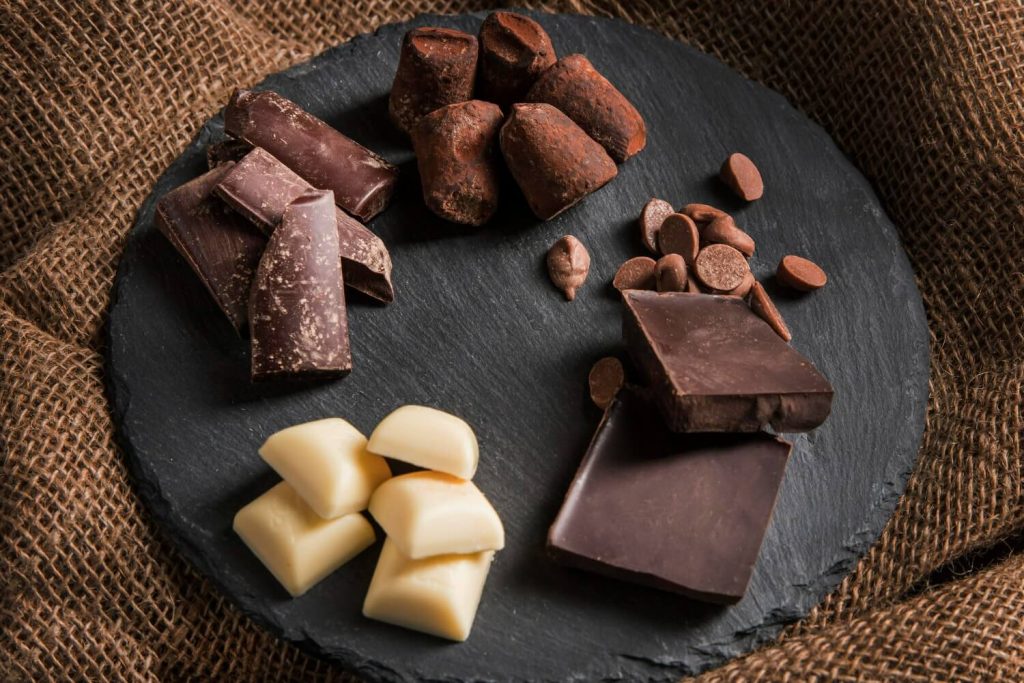
Styles and Categories
Artisan chocolatiers craft a wide range of chocolate styles, each with unique flavors and textures.
Dark chocolate
The benchmark of artisanal chocolate, expressing the finest cocoa beans through rich flavor and complex flavors.
High content bars use less sugar and can deliver everything from citrus brightness to nutty depth, pairing beautifully with wine, coffee, or a variety of desserts thanks to its balanced sweetness and rich profile.
Milk chocolate
A showcase for gourmet chocolates when made with high quality cocoa, milk solids, or even plant based alternatives. It offers a creamy texture and can highlight subtle notes when crafted with care quite different from regular chocolates.
White chocolate
Made primarily from cocoa butter, milk powder, and sugar, deserves recognition when high ingredients are used. The result is a chocolate bar with delicate sweetness and sometimes a distinctive floral aroma.
Caramelized ruby and blonde chocolates
These chocolates bring innovation to the industry, with ruby offering a natural pink color and fruity acidity, while blonde provides toffee-like notes.
Inclusion bars and truffles
Add another layer of enjoyment, including nuts, fruits, or spices into the chocolate mixture. These specialties expand the palette for the confection, offering lovers and enthusiasts exquisite flavors to explore.
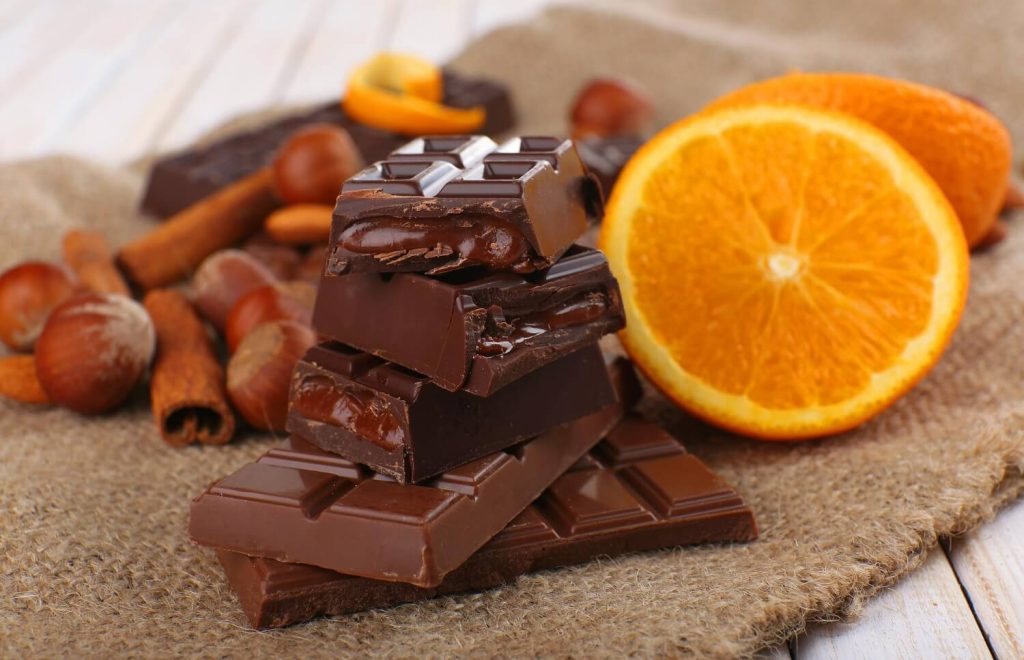
Image source: https://www.freepik.com/premium-photo/chocolate-orange-nuts-table_321863721.htm#from_element=cross_selling__photo
Flavor Notes by Origin
Cacao varieties from different regions produce unique flavors that excite the taste buds.
- Ecuador and Central America: Floral aromas, caramel, and panela sweetness.
- Dominican Republic: Rich, cocoa-forward flavors with spice and earthiness.
- Ivory Coast and West Africa: Nutty cocoa profiles that dominate commercial chocolates but excel in artisan hands.
- Madagascar: Distinctive floral notes, citrus brightness, and layered complexity.
- Peru: Citrus, red berries, and wine-like acidity.
- Southeast Asia and the Philippines: Tropical fruit, palm sugar, and fermentation-driven unique flavors.
- Venezuela: Criollo beans prized for dried fruit, balanced sweetness, and creamy texture.
Each bar reflects its terroir, reinforcing why origin is essential in artisanal chocolate.
Ethical Sourcing and Sustainability
Ethical sourcing is central to artisanal chocolate, as fair trade practices and fair compensation ensure local farmers benefit from their labor.
Many artisans go further, building direct relationships with growers, improving harvest techniques, and championing sustainable methods such as agroforestry.
Supporting chocolatiers who uphold these standards means consumers enjoy gourmet confection with rich flavors while local communities gain recognition and stability.
For lovers and enthusiasts, artisanal chocolates delivers both fine specialties and peace of mind.

How to Taste Chocolate Properly
Tasting artisanal chocolate requires slowing down and engaging the senses. Start with appearance: tempered chocolate should display a glossy finish and snap cleanly.
Bring the bar close to your nose and inhale; the aroma may reveal floral, fruity, or nutty hints depending on the cocoa content and origin.
Place a piece on your tongue and let it melt slowly, allowing cocoa butter crystals to dissolve and release rich flavor.
Observe how the chocolate mixture evolves: the opening notes, the mid-palate complexity, and the lingering finish. For example, dark chocolate pairs beautifully with nuts or wine, while white chocolate highlights creamy texture and balanced sweetness.
Comparing several chocolate bars side by side, say a dark chocolate at 70 percent from Central America and one from Southeast Asia, trains taste buds to detect flavor differences.
Pairing Artisanal Chocolate
Pairing artisanal chocolates enhances the appreciation of their unique flavors.
Dark chocolate bars with high cocoa content often pair well with coffee or fortified wines to highlight rich profile.
Milk chocolate, with its milk solids and creamy texture, complements black teas or lighter red wines.
White chocolate, with its cocoa butter base, pairs nicely with fruit-forward desserts or champagne.
Spirits such as rum or whiskey bring out caramel or spice notes in artisanal chocolates. Truffles, bonbons, and specialty chocolates can be matched with various desserts for indulgent experiences.
Whether enjoyed with tea, wine, or cheese, pairings unlock complex flavors, demonstrating why artisan chocolates are the preferred choice for chocolate lovers.
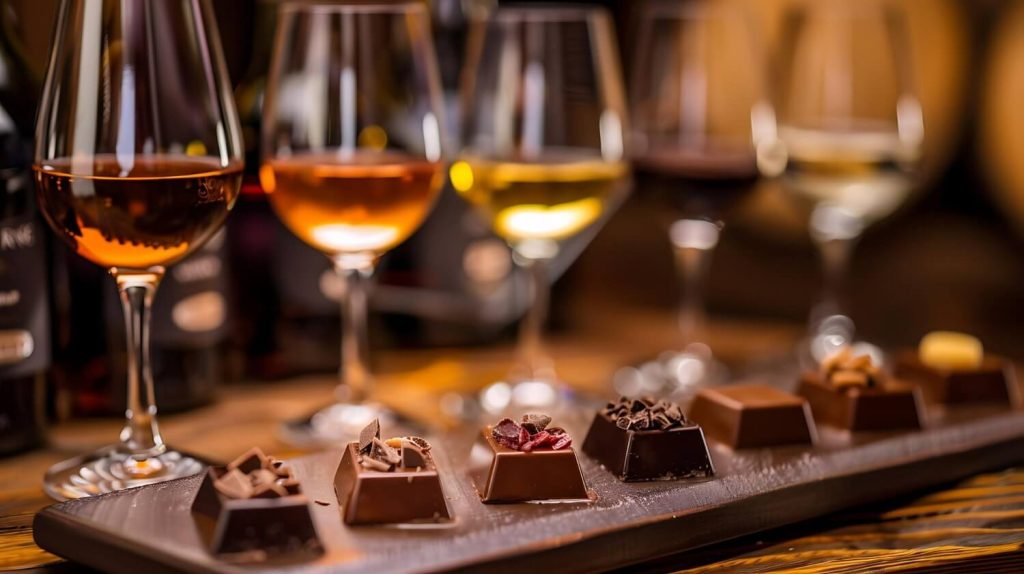
Buying Guide: What to Look For
When buying artisanal chocolate, transparency is key. Look for elegantly packaged bars that specify origin, cocoa content, and whether fair trade or ethical sourcing practices were followed.
High quality chocolate should have a short ingredient list, showcasing wholesome ingredients and avoiding excessive additives.
Freshness is especially important for truffles and bonbons, while chocolate bars made from high quality cocoa beans can last up to a year if stored properly.
Invest in artisanal chocolates that highlight sustainable methods, natural sweeteners, and small batch production. Artisan chocolates may cost more than commercial chocolates, but the difference lies in their balanced sweetness, distinct flavor, and high quality cocoa beans.
Storing and Serving
Proper storage safeguards chocolate quality. Keep artisanal bars in cool, stable conditions, away from light and odors as cocoa butter absorbs scents easily.
Wrap chocolate tightly to preserve freshness and maintain a glossy finish. Break chocolate just before eating to retain tempered chocolate’s snap and creamy texture.
Truffles and fresh-filled chocolates should be enjoyed quickly, as their natural ingredients shorten shelf life. Storing and serving carefully ensures chocolate lovers enjoy the rich flavors and creamy textures as intended.
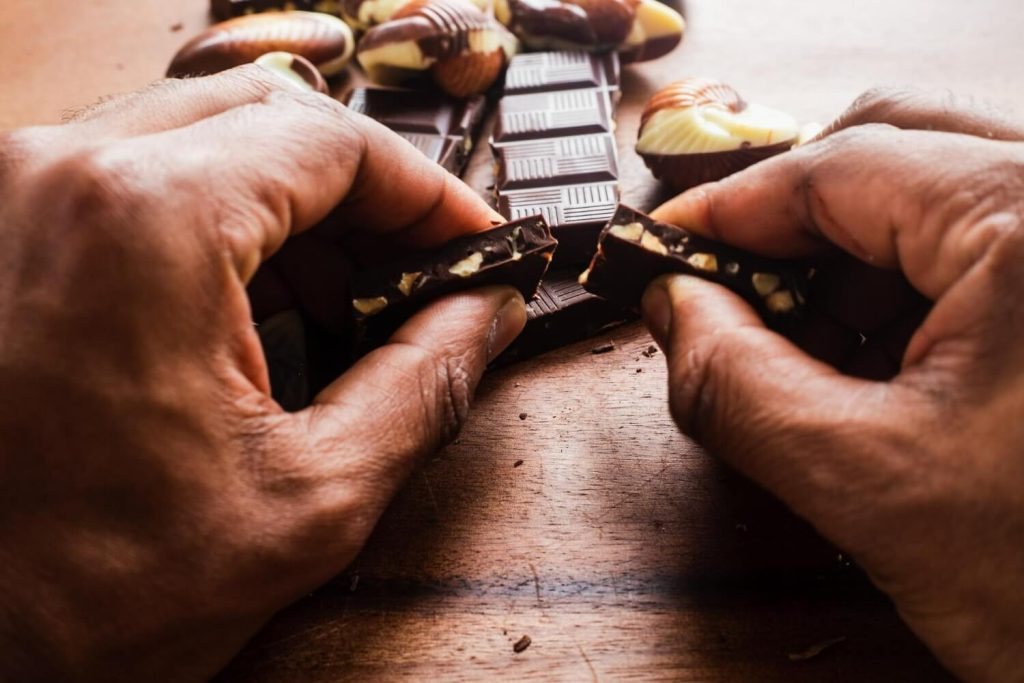
A Final Bite
For those seeking the very best the chocolate industry offers, artisanal chocolate is both a guide to discovery and an invitation to savor.
Whether you love dark chocolate bars with high cocoa content, silky milk chocolate, or delicate white chocolate, artisanal chocolates crafted with care and natural ingredients promise an experience of balance, beauty, and breathtaking craftsmanship.


